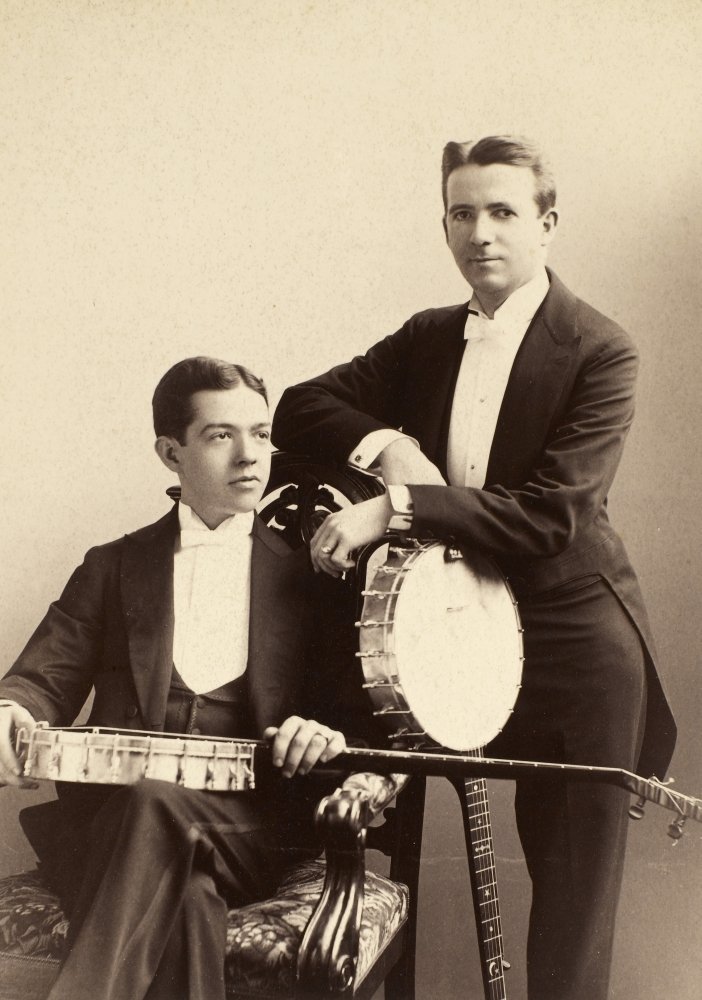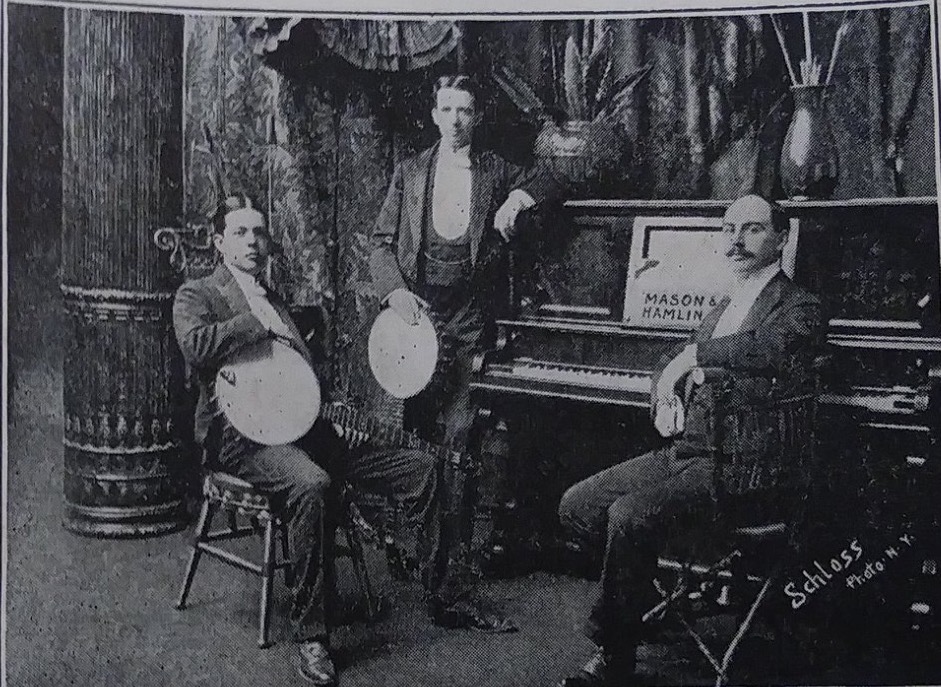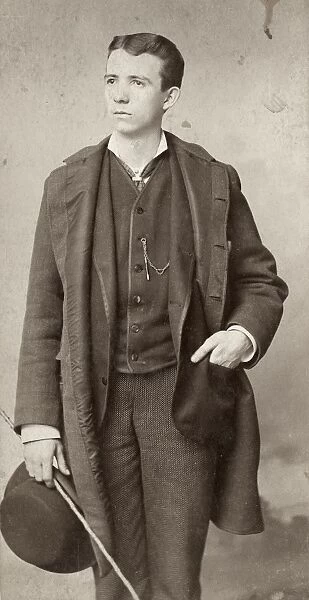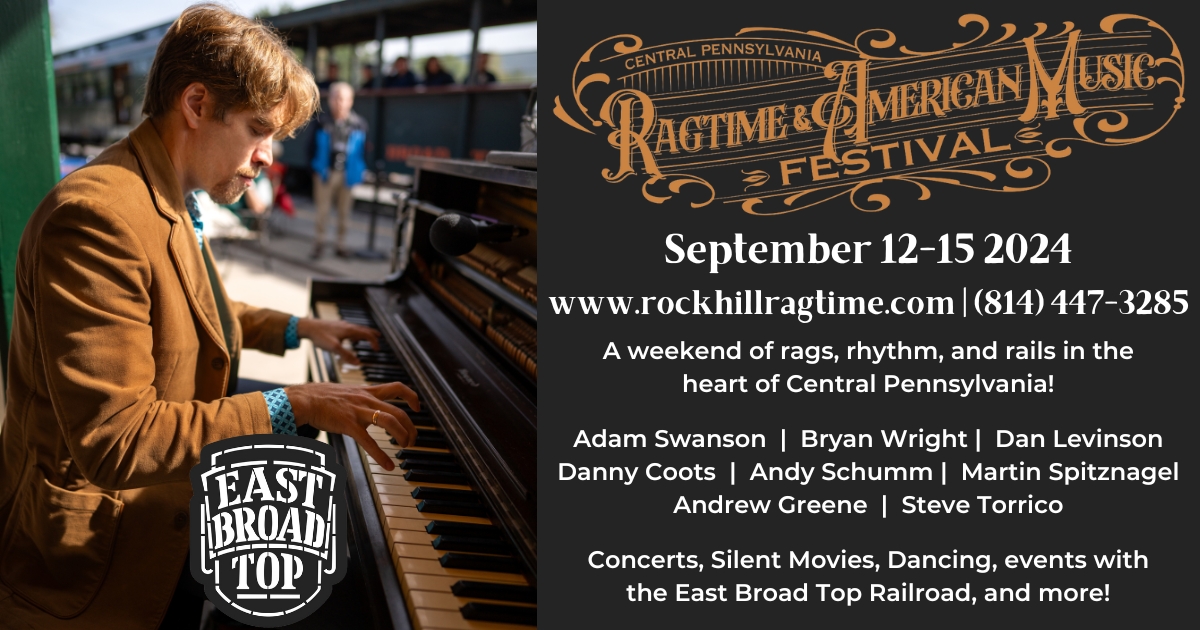In the era of Tin Pan Alley, a few recording artists tried to unite their record making with sheet music publishing. In the latter 19th century, sheet music sales still indicated what was popular, and it would take a few decades for records to catch up. While Fred Hylands and Len Spencer were among the earliest to try this, the very first was Ruby Brooks. Although Brooks joined the phonograph world rather late, he made an unusual impact on the business.
Reuben Brooks was born September 12, 1861, in Stamford, Connecticut. His father William was a barber in the area. As a child, Brooks wasn’t necessarily surrounded by music, but he soon became fascinated by it. With this fascination, he taught himself how to play the banjo. By 1880, he was working regularly as a banjoist; he shows up in several Connecticut papers from 1882 onward. According to one article from the time, he gained his national fame from an 1887 banjo contest held in New York. Among the others who entered were a 19-year-old Vess Ossman, and Brooklyn native Harry Denton.

Brooks took the prize, and decided that Harry Denton (who placed second in the contest) could be a good stage partner, as they mutually admired one another’s skill on the instrument. Ossman wasn’t satisfied with losing out, so he made sure to challenge Brooks in a few other banjo contests in the next two years. A few subsequent articles from 1888 and 1889 included short notices that Ossman challenged Brooks to more than one rematch, one of which included a $500 prize. It was around this time that he realized where he could make much more money—in publishing. He and Harry Denton decided to be partners not only in banjo playing, but partners in publishing. So in 1887, Brooks and Denton publishing began. They set up their office right at the northern edge of what was to be called Tin Pan Alley, at the corner of 6th Avenue and 39th Street in Manhattan.
At first they were a very minor publishing firm, but by the early 1891, they were a happening spot, as that year they, along with accompanist Jacob Silberberg sailed to England where they played for the then Prince of Wales Edward (future Edward VII). Since the beginning of their publishing venture, Brooks made it a point to publish pieces by his favorite piano accompanist, Jacob Silberberg. He was almost always guaranteed to be the pianist that accompanied Brooks and Denton, as many advertisements at the time mentioned them as an entertainment package. One 1892 advertisement stated:
NY “stag” entertainers,
“Ruby, Harry, two Toms, and Jake”
In this advertisement, the two Toms are Tom Ballantyne, ventriloquist and humorist, and Tom Casey, comic singer. “Jake” is Jacob Silberberg.
Around 1895, they had set up another major office at 670 6th Avenue at West 21st Street). It was there that they gained even more renown as publishers, this is also where their main office was moved, and it remained until Brooks’ death.
Silberberg around this time began making records, something that Brooks was fascinated with, but not yet fully interested in taking on. It is entirely possible that it was Silberberg who encouraged Brooks to make recordings. Brooks by this time was beginning to associate himself with many recording artists, Vess Ossman and Frank P. Banta being among the first he worked with other than Silberberg. In 1894, Brooks published a very early syncopated song by Silberberg and recording artist Dan W. Quinn, which brought Brooks inching ever closer to the phonograph.

It took until 1898 for Brooks to finally start making records. Unfortunately, Brooks did not bring Denton along with him to make any of these records. He did, however, take Silberberg with him. He started making records for Edison, and with his fame, these recordings were a big deal at the time. It is surprising that Brooks had any time to make the records in the first place, but because of this, he didn’t make very many in the long run. He continued to make records for Edison for nearly a decade, but he recorded for others in that time as well: Climax, and Zon-O-Phone. According to many collectors, Brooks’ Zon-O-phone records are highly desired today, but for some reason always surface in terrible condition. This might have something to do with the sometimes questionable pressing quality of Zon-O-phone at the time. He made only four of them.

You can even find Brooks in the large 1900 photo of 42 of Edison’s recording artists. While he has a smirk in the shot, his age shows rather well than in other photos of him. He had clearly spent many happy nights at those stag parties he and Denton frequently played. While the height of his career had passed, he was by no means getting less work. Dozens of newspaper articles mention Brooks and Denton continuing to play for high society parties and events all over the tri-state area. Just a few big names who had the chance to hear them were; Consuelo Vanderbilt, Alice Roosevelt, King Edward VII, and many other prominent socialites and politicians.
Brooks had not been well for a while; he had throat cancer that was spreading rapidly. By 1904 and 1905, the number of events he played with Denton and Silberberg (who was by this point completely blind) had greatly diminished. His obituary in the New York Dramatic Mirror stated thus: “Though he had been ill for some time, he took to his bed only when absolutely compelled to do so by his physicians.”
He was truly a musician to the very end, even though he made most of his money in publishing. Brooks went in to have much of the cancer surgically removed, but as was common in those days, he did not survive the operation, and died on February 10th, 1906. A very significant thing to note about his funeral is the list of pallbearers. Among them were Harry Denton, fellow banjoist Bill Farmer, and perhaps most interesting of all was Harry T. Burleigh. Burleigh was a very significant black singer and writer who wrote down many spirituals for the first time. It is notable that Burleigh had carried Brooks’ coffin many years before he reached the height of his success.
Despite his early death, Brooks remained a very important name in the banjo world. Even decades later Fred Van Eps mentioned his playing and recordings fondly. Vess Ossman over time had forgiven the rivalry he once had with Brooks, and grew very fond of him. Even today he is still revered in the historical banjo community, with many musicians still taking on his arrangements and technical style.



























